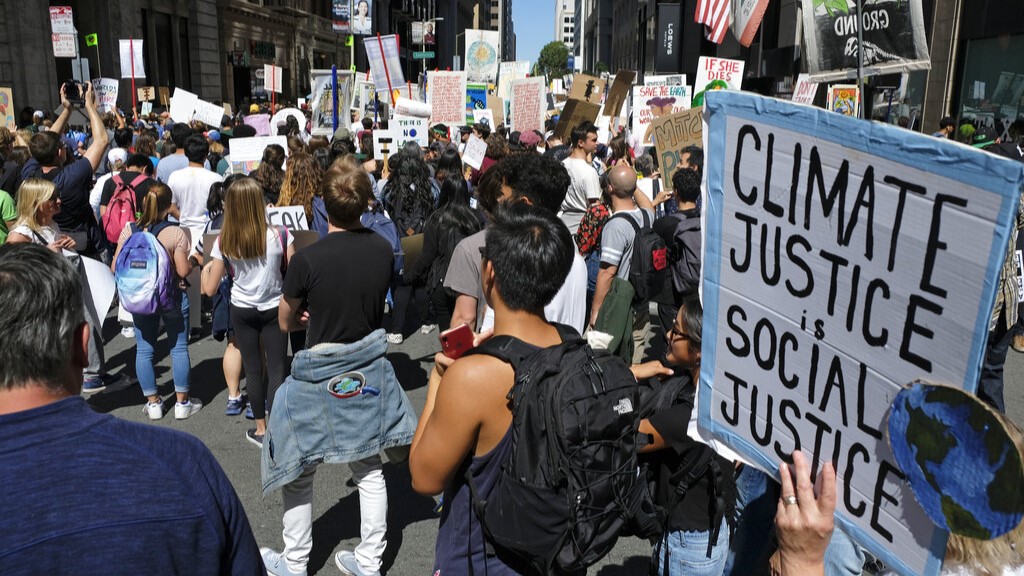Study predicts sea level rise could swamp Bay Area cities at high tide
SAN FRANCISCO (KGO) -- Water lapping over San Francisco's Embarcadero may be a familiar sight -- But now a new study by our partners at the non-profit research group Climate Central is painting a much more drastic picture.
That picture? Projections of widespread flooding in coastal cities, based on temperature rise.
RELATED: Project to combat climate change, rising sea levels begins at SF's Ocean Beach
"Yeah, so I'm afraid that a lot of what we're showing here is already in the pipeline or about to be in the pipeline. Because there are a lot of things in San Francisco, in the Bay Area that could be affected with only one and a half degrees Celsius of warming," says Climate Central Chief Scientist Benjamin Strauss, Ph.D.
Strauss says the study compares scenarios of peak temperature rise above pre-industrial levels.
With a relatively optimistic rise of 1.5 degrees Celsius, downtown San Francisco still looks familiar and dry. But double that to 3 degrees Celsius in coming decades, and a large area South of Market could swamped at high tide, along with iconic destinations like the Museum of Modern Art.
VIDEO: NASA lab captures fresh signs of 'rapidly' melting glaciers in Greenland

The picture isn't much brighter in the lush Parkside around Lake Merritt in Oakland, which could also succumb to tides.
While some of the worst case scenarios might take many decades or centuries to play out, researchers say coastal cities around the world will likely have to build defenses, like higher sea walls, to survive.
"People will have to decide how deep a bowl they want to live in, or put their city in. The consequences of failure of defenses will be quite large, if the sea level is, you know, 10 or 20 feet above you. But that's the potential future situation if we don't get our climate pollution under, under control. And very quickly," Strauss adds.
RELATED: Why Greenland's rapid ice melt could pose climate threat to San Francisco Bay
He says global climate pollution would have to be cut in half by the end of this decade to maintain the more optimistic 1.5 degree Celsius peak and head off the worst effects. But with a major climate summit set to begin next month in Scotland, Strauss believes there is still hope, if we take quick action.
"The world will remember what they do on climate, especially if they fail, but they have the chance to be heroes if they can succeed and if all of us can succeed," he believes
A challenge for world leaders now coming into sharper, if not dire focus.
Editor's Note: This story was produced in collaboration with Climate Central, which has posted their study and an interaction map to search your area. To view that map click here.











